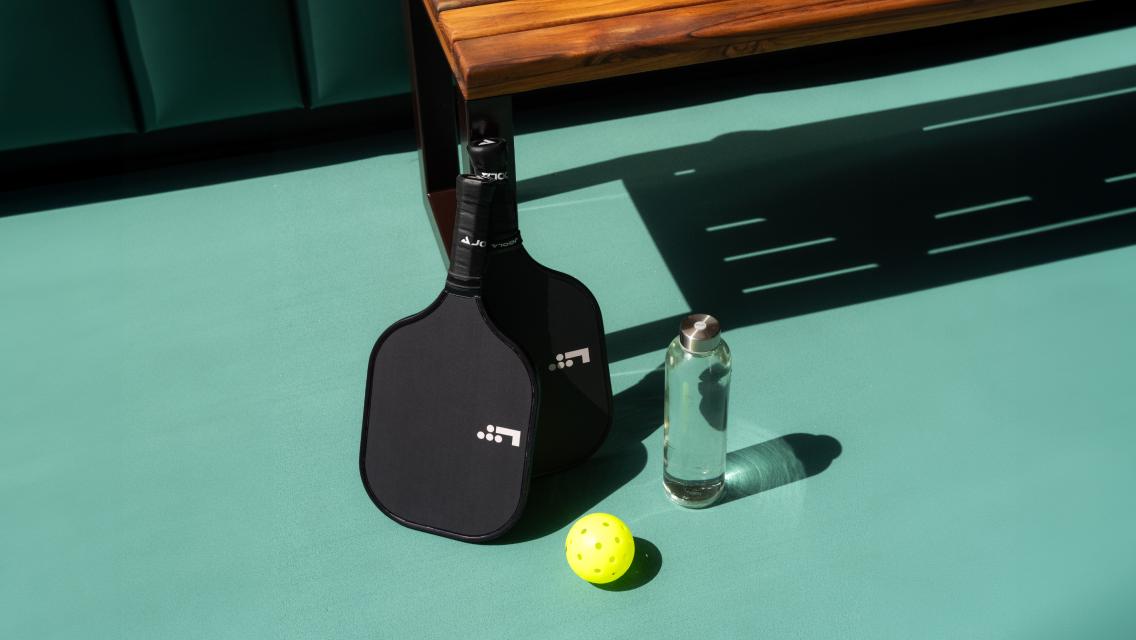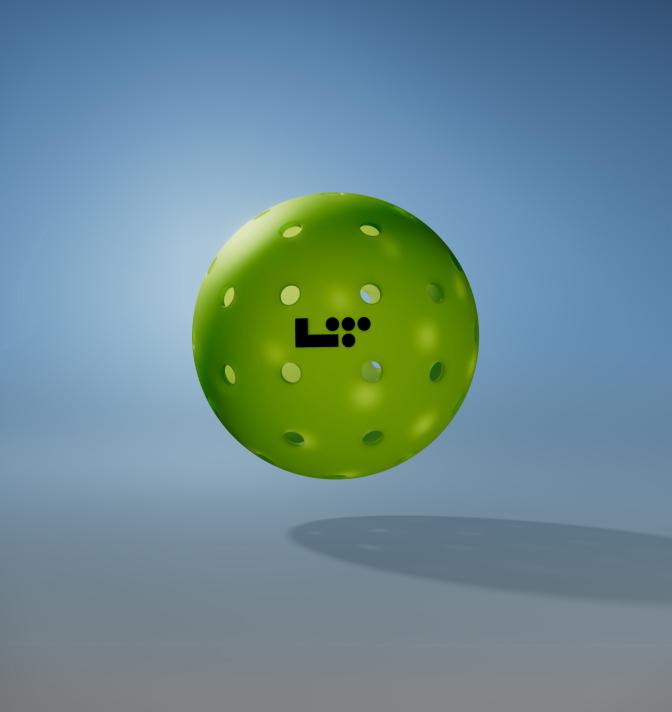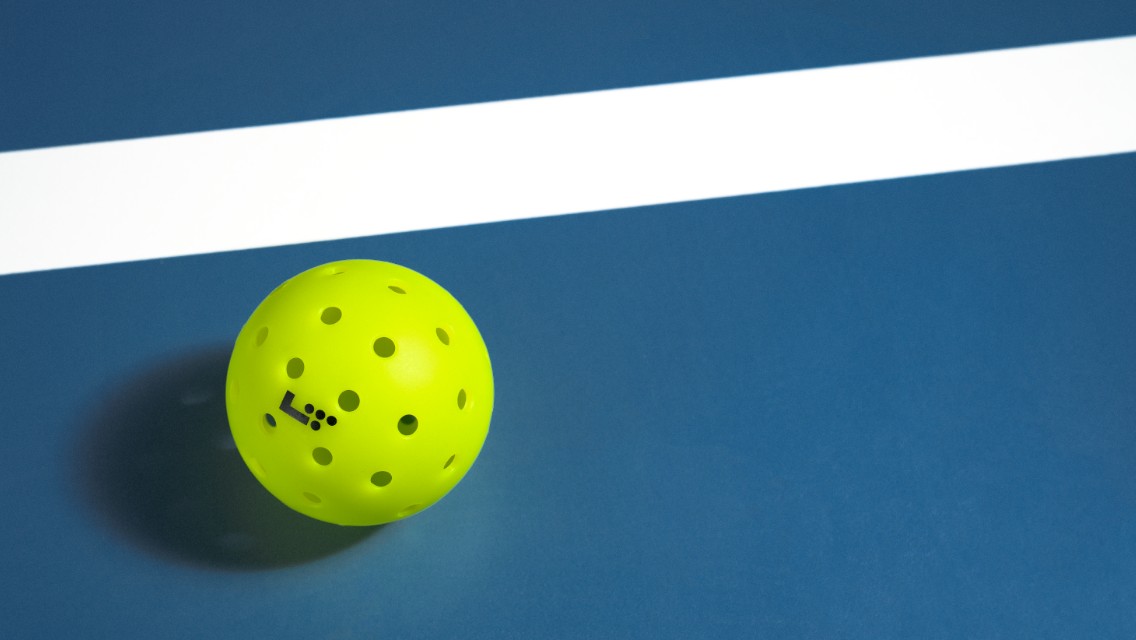With any sport or activity, there’s a need for at least a base level of equipment so you can get in the game. Then there are sports like pickleball, in which the quality of the equipment can make a real difference in your performance.
“Using high-quality equipment can help pickleball players feel more confident and improve their standard of play,” says Mohanad “Mo” Alhouni, lead general and tennis and pickleball performance professional at Life Time Oakdale Village Tennis in Minnetonka, Minn.
“Certain types and levels of gear can also help protect players from injuries. For example, foot and ankle issues can be prevented by having shoes that support lateral movement. Or arm and elbow issues can be avoided by having a good-quality carbon fiber paddle.”
What pickleball equipment do you really need, though? Alhouni shares his advice for choosing quality pickleball equipment — though he also emphasizes not overthinking it if you are a beginner.
“You can be more particular about the gear you play with as you learn more about the game and how your body performs [while] playing it — and as your level improves,” he says. “For example, you want to be patient when demoing paddles. Look for what helps you play and feel better on court. If something is working for you, then continue with it.”
Court Shoes
A pair of shoes that allows for lateral movement and provides ankle support is essential as pickleball requires swift movements. This is especially useful at the beginner level as you’re learning the right movements and basics of play.
Alhouni advises looking for shoes that provide support, traction, stability, and extra cushioning around the ankles, as well as that feel like they’re holding the foot in place.
Pickleball Paddle
Paddle preferences vary by player. Price (paddles can cost anywhere between $20 and $250 — and some are a lot more), shape, weight, width of the edge, material, grip size, and grip length are all factors to consider. Players tend to become more selective once they reach the intermediate level and have a better sense of their game style.
Demoing multiple paddles before committing to one is the best way for someone to identify the one best suited for them. “A player needs to consider their style of play as they try different paddles,” says Alhouni. “For example, a thicker core paddle will be more giving, making it better for control and feel, while a thinner core paddle is better for power.”
If you’ve ever wondered about the paddles the pros use, we have insight into a few:
- Ben Johns, ranked No. 1 in the world for mixed doubles and No. 1 in the world for men’s doubles by the Pro Pickleball Association, recently released his new paddle, the JOOLA Ben Johns Perseus CFS 16.
- Anna Bright, who made her pickleball pro debut in 2022 winning the Punta Gorda singles and doubles titles and has since been drafted to Major League Pickleball, uses the JOOLA Anna Bright Scorpeus CFS 14 pickleball paddle.
- Collin Johns, Ben’s older brother who won consecutive U.S. Open crowns in 2021 and 2022, as well as the USA Pickleball National Championships in 2022, uses the JOOLA Collin Johns Scorpeus CFS 16 paddle.
Pickleballs
A pickleball looks like a wiffle ball — though they are not interchangeable — and it can make or break the quality of play. Different balls play faster or slower, or harder or softer than others, and the bounce can also vary. “For a fun and competitive game, players would want to play with a ball that offers consistency in the way it plays overall and one that does not crack after a couple of games,” says Alhouni.
Life Time recently released its own pickleball, the LT Pro 48 Pickleball. This patent-pending ball is designed to solve for many of the issues players experience with traditional pickleballs. It works for both indoor and outdoor play, is more durable against cracks, and because the holes are more evenly distributed across the surface, it allows for a more consistent speed and bounce. (Learn more: “4 Fun Facts About the New Pickleball from Life Time.”)
Other options on the marketing include those specifically for indoor or outdoor use. Indoor balls are generally lighter with fewer but bigger holes, and they have a thinner surface than outdoor balls. As players become more skilled, the ball may start losing its circular shape and get softer sooner due to force on the ball from the hard and constant hits (warm weather can also contribute to this change). High-level, highly competitive players typically need a new ball every game or two.
Paddle Overgrip
Often overlooked, a paddle grip provides performance benefits and comfort, especially for beginners. It allows players to develop better feel, while also offering support and cushioning (since they probably aren’t used to holding a paddle).
An overgrip absorbs sweat and prevents the paddle from slipping in your hand while you’re hitting. For those who don’t use a towel between points, the slippage prevention can be a performance boon.
“Consumers can look for tacky comfort overgrips for the best performance, feel, and play,” says Alhouni. “Overgrips need to be replaced every so often, with frequency depending on how much you play — generally, once a month for beginner to intermediate players, and two to three times every other week for advanced or professional players.”
Lead Tape
Every pickleball paddle should have some sort of lead tape for overall paddle control and better feel, according to Alhouni. It adds weight and can be distributed across the face of the paddle or nearby it, depending on preference.
“Players will want to consider if they want to add more topspin or more power and weight to their shot,” says Alhouni. “For more topspin, place the lead tape on the top of the face of the paddle. For more power and weight, place the lead tape on the bottom half of the paddle — the throat of the paddle.”
Paddles do not typically come with lead tape, so it’s an additional purchase.
Pickleball Bag
A pickleball bag is helpful for storing all your gear so you can simply grab it and go play. Alhouni advises including extra clothes, a water bottle, your pickleball paddle, overgrips, a sweat towel, shoes, and any other items you feel you need to have for the best playing experience.





